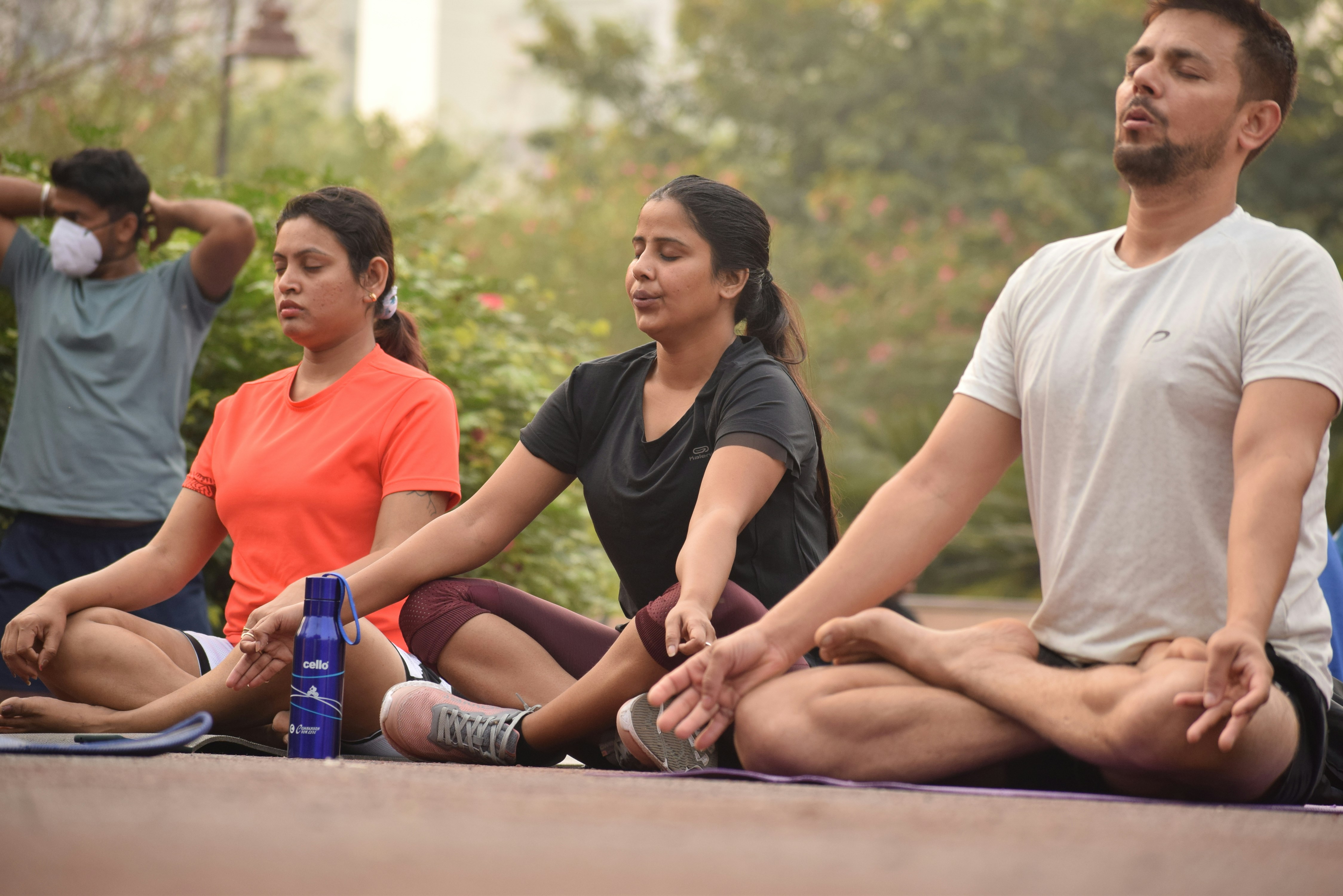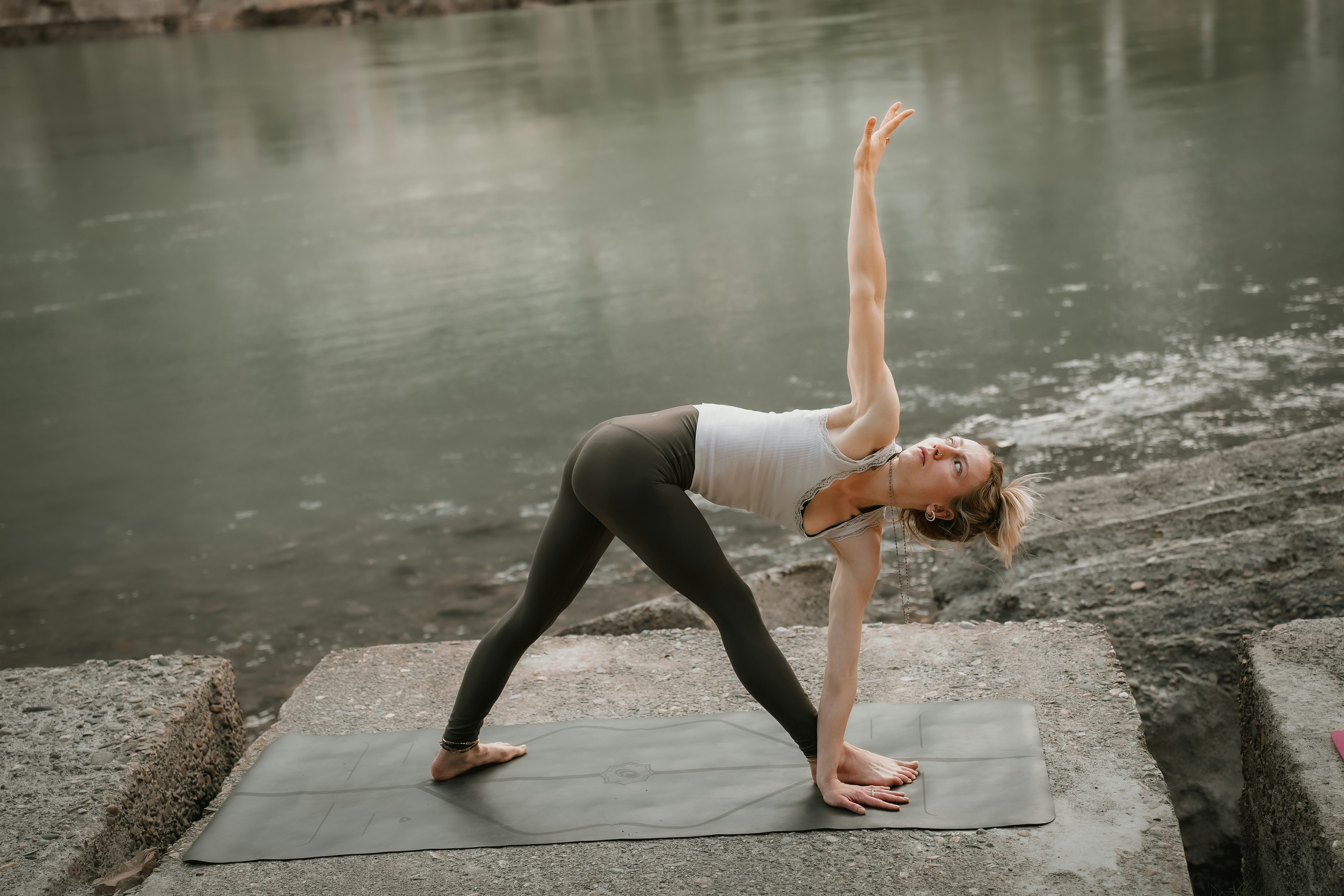Understanding Corpse Pose: An Introduction
Corpse Pose, referred to as Savasana in yoga, holds a pivotal position within the practice of yoga. This concluding posture is often regarded as a crucial element for ensuring that the benefits of earlier movements and poses are fully absorbed and integrated by the body and mind. Unlike the dynamic sequences that typically characterize a yoga session, Corpse Pose invites practitioners into a state of profound stillness and relaxation, creating a stark contrast to the physical exertion that precedes it.
Practicing Savasana cultivates an environment of tranquility, allowing individuals to achieve a deeper connection with their breath and body. During this period of rest, practitioners are encouraged to let go of tension and mental distractions, turning their focus inward. This transition from active poses to the serene experience of Corpse Pose highlights the importance of balance within a yoga practice, showcasing that moments of stillness are just as significant as moments of movement.
The significance of Corpse Pose extends beyond mere relaxation; it serves as a tool for mental clarity and emotional equilibrium. Participants often report a heightened sense of awareness and a greater ability to manage stress after engaging in this restorative posture. Furthermore, as Savasana encourages the realization of the present moment, it fosters mindfulness, an essential component of a holistic yoga practice.
In summary, understanding Corpse Pose is fundamental for anyone engaged in yoga. Its role as a harmonizing force amid the dynamic challenges of asanas cannot be overstated. As practitioners transition through their yoga journey, they learn to appreciate Savasana not just as a conclusion, but as a vital experience of stillness that enriches their overall practice.
The Historical Roots of Yoga and Savasana
Yoga, as a holistic practice, has its roots deeply entrenched in ancient history, transcending geographical and cultural boundaries. The earliest mentions of yoga can be traced back to the Vedic texts around 1500 BCE, where it formed an integral part of spiritual and philosophical discourse. These texts highlighted meditation, self-discipline, and ethical conduct, essential elements contributing to personal harmony and spiritual growth. The evolution of yoga continued through a myriad of influences, transitioning from the devotional practices of the Upanishads to the structured methodologies presented in Patanjali’s Yoga Sutras, dating back to the second century BCE.
The term ‘Savasana’ directly translates to ‘corpse pose’ in Sanskrit, a critical posture within modern yoga practice. The etymology of ‘Savasana’ can be unpacked to reveal an essential aspect of its purpose: much like a corpse, this pose embodies complete stillness, encouraging practitioners to relax and release mental and physical tension. Over centuries, Savasana has been influenced significantly by various philosophical texts, including the Bhagavad Gita and the Hatha Yoga Pradipika, both of which emphasized the importance of rest and recuperation within one’s yoga practice.
As yoga adapted to varying cultural contexts, the significance of stillness became more pronounced. The historical lineage reveals a continuous interplay between action and repose, underscoring the need for balance within the yoga experience. Savasana emerges as a restorative conclusion to an active practice, allowing practitioners to integrate and embody the benefits derived from their efforts on the mat. This integration is not only physical but also mental, encapsulating the essence of ancient principles advocating for mindfulness and relaxation.
The Symbolism of Death and Rebirth in Corpse Pose
The Corpse Pose, known as Savasana in Sanskrit, serves as more than a mere relaxation technique at the end of a yoga practice; it embodies profound symbolism centered around themes of death and rebirth. This pose invites practitioners to surrender to the moment, creating a space for introspection and renewal. In various cultures, the concepts of death and rebirth are intricately woven into the fabric of spiritual beliefs, often signifying transformation and a return to the essence of life itself.
When one enters Corpse Pose, the body is laid still, reflecting the state of passing from physical activity to deep rest. This stillness encourages the relinquishment of past experiences, thoughts, and tensions, allowing individuals to embrace a state of being that can lead to personal rebirth. The act of letting go within Savasana symbolizes the release of old narratives and emotions, facilitating a journey towards a more present and mindful existence. In this sense, the practice becomes a metaphor for the cycles of life and death, encouraging practitioners to confront their own mortality while recognizing the potential for renewal that comes with each breath.
The psychological benefits of embracing stillness in Corpse Pose are far-reaching. By cultivating a safe environment for self-reflection, individuals can explore their inner landscapes, assessing fears and aspirations without the distractions of daily life. This introspective quality allows for the potential of death to transform into the hopeful embrace of rebirth. Across various belief systems, embracing stillness is seen as a gateway to clarity and enlightenment, underscoring the energetic transitions that reflect the cycle of existence. Thus, the Corpse Pose not only serves as a physical resting state but also as a profound reminder of the beauty inherent in letting go and beginning anew.
Modern Interpretations and the Popularity of Corpse Pose
Corpse Pose, known as Savasana in Sanskrit, has transcended its traditional role in yoga to become a vital component in contemporary wellness practices. Its significance has been recognized as a powerful tool in promoting mindfulness, relaxation, and mental health. In the fast-paced environment we find ourselves in today, the importance of integrating stillness into our lives cannot be overstated. As such, many modern yoga instructors actively incorporate Savasana into their class structures, enhancing the overall experience of their students.
The practice of Corpse Pose offers a unique opportunity for individuals to become aware of their breath and bodily sensations, fostering a deep state of relaxation. This process allows practitioners to let go of tension and stress, promoting a heightened sense of awareness and presence. Within this state, participants may find clarity, enabling them to cultivate a more profound connection with themselves. As wellness becomes increasingly intertwined with mental health, Savasana’s contributions to stress reduction have attracted attention from practitioners and researchers alike.
Recent studies have demonstrated that engaging in Savasana regularly can lead to notable improvements in emotional health, such as reduced anxiety and increased resilience to stress. Furthermore, the pose is often linked to various mindfulness techniques, aligning it with the broader movement toward holistic well-being. The popularity of Corpse Pose in meditation practices has grown, offering individuals a safe space to unwind and reconnect with their inner selves.
As the exploration of yoga expands to embrace diverse populations, Savasana remains a cornerstone. Its simplicity belies its power, providing individuals with a crucial bridge to tranquility in their wellness journey. By fostering a sense of stillness and mental clarity, the modern interpretations of Corpse Pose have undoubtedly solidified its enduring relevance in today’s holistic health landscape.



